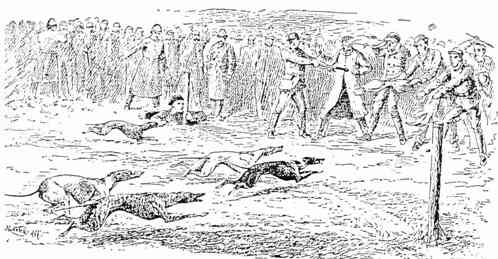
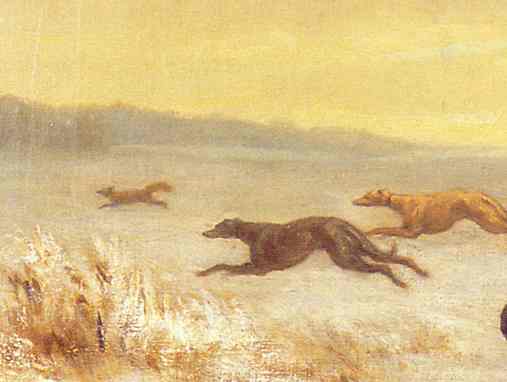
The Chart Polski iconographic representations in Juliusz Kossak works
The iconographic representations of the Chart Polski are noticeably unvarying.
This uniform general appearance in drawings and paintings proves that, in spite of different interbreeding, the original aspect of the breed has remained unchanged up to the end of the XIXth century.


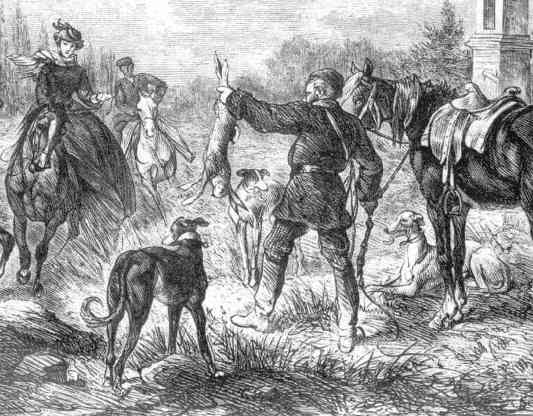
On this old english engraving (left) you see some English Greyhounds. You can compare with the drawings of Polish Greyhounds (right - Sledge hunt – 1869 – oil on canvas,detail) : the Polish Greyhound is also a dog of great size, powerful, muscular, but definitely stronger and less fine in shape than the other short-haired sighthounds. He must not, however, be heavy nor lethargic : he is a athlete.
The painting (right) is a work of Juliusz Kossak. It represents fox hunting with Polish Greyhounds, a subject repeatedly taken up by this artist.
Juliusz Kossak (1824 – 1899)
In the hearts and minds of the Poles the status of the painting of Juliusz Kossak haves a special place. It is a colourful tale of the nation’s history and its glorious chapters, of Polish customs and culture, and of the beauty of Polish soil : the Polish Greyhound is part and parcel of this world. When Poland had no statehood, Kossak’s œuvre encouraged the hearts of the countrymen, consolidated national awareness, quickened aspirations for national independence, in brief, was an emanation of patriotism.
Juliusz Kossak mainly employed watercolour, in which technique he reached unparalleled mastery. In contrast to the large-sized and stilted oil painting, the process rendered his work more accessible and familiar.
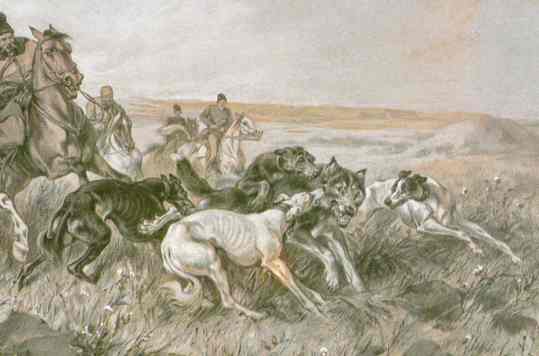 Watercolour
- 1883
Watercolour
- 1883
Juliusz Kossak, who was an expert on hunting and loved it, delighted in depicting all sorts of wolf, bear and game hunting scenes.
How to prove beter that « the strong frame, the short coupled body, the distinctly visible musculature and the powerful jaws show that this dog has been used for hunting in the difficult conditions of the Polish climate. The expressive eyes, with a lively and penetrating look, play an
important role in the general aspect of the Polish Greyhound. When hunting the Polish Greyhound is fast, very skilful and untiring. In action, he reacts quickly and brutally. » ?
Polish Greyhounds returned with such a fidelity …
This painter known by his talent for the beautiful compositions, full with life and heat, is also a remarkable animalist painter whose predilection goes to the Arab horses and the Polish Greyhounds. These animals are returned with such a fidelity that independently of their artistic value, works of Juliusz Kossak have, on the zoological level, a documentary interest recognized by people of science.
It is not rare to be able to recognize, from one work to another, (nearly) the same dog in various attitudes.
|
|
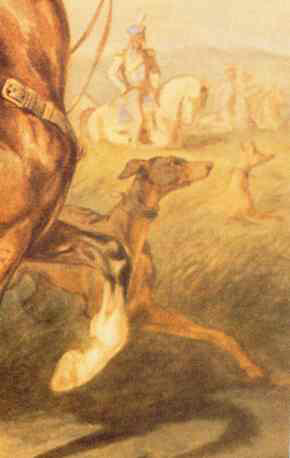 |
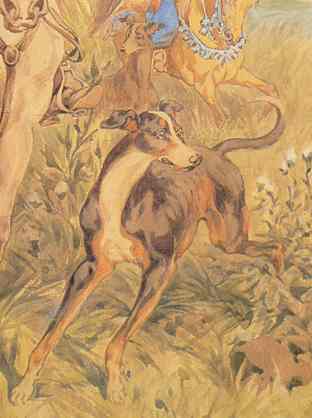 |
watercolour 1877 1868 1855 (Kafarek) 1890
|
|
watercolour – 1882 1876 1880 1855
(Kafarek) 1866 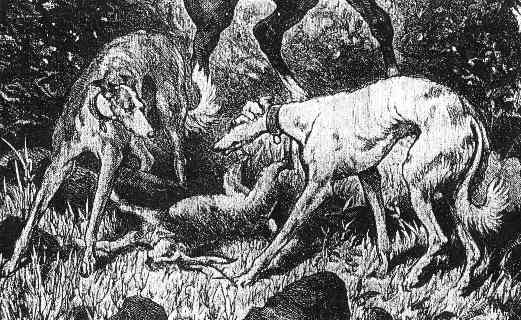
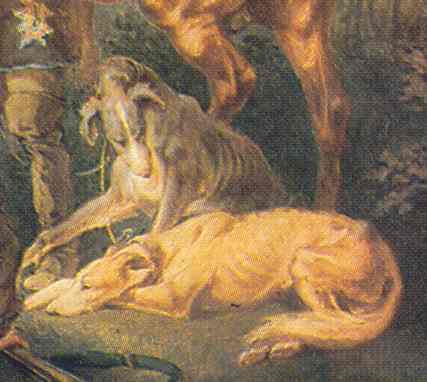 Compare with these extracts of the standard FCI 333 :
« In his appearance, the Polish Greyhound is similar to the Asiatic greyhound who is his ancestor. Ears : of medium size, quite narrow ; when laid forward their tips easily touch the inner angles of the eyes. Set at eye level. The auricle of the ear has a relatively soft cartilage ; the ears give the impression of being quite fleshy. Admitted ear carriage : folded backwards, touching the neck ; roof shape position ; in a state of excitement, ears fully erect, or with the tips slightly bent forward.. Neck : long, muscular, powerful, oval in profile, rising gently from the line of the withers. Head carriage rather high (the Polish Greyhound, at rest, carries the head slightly lower than the Greyhound. Body : In the free standing hound, the height at the withers should be equal to the height at the summit of the croup. Topline : Straight in the thoracic part, gently arched in the lumbar region. In the females an almost straight topline in the lumbar region is not a fault. Tail : Feathered, long, strong at the base, at rest carried low ; the tip of the tail should be in the shape of a sickle curved upwards or forming a complete ring. Sometimes, while at rest, the tail may be hanging straight down, but never so excessively like a cow’s tail.On the move, the tail may be carried higher, but the base of the tail should not be carried higher than the level of the loin. Coat : coat springy to the touch,
rather harsh, not « wired-haired » but not silky either. Of variable
lengths over all the body. On the withers the coat may be longer,
shorter on the sides ; it is on the sternum and the legs where it is the
shortest. The hair on the abdomen is more delicate, more sparse. At the
buttock anda long the whole underside of the tail the hair is longest
but still also harsh, forming modest breeches and a brush. » 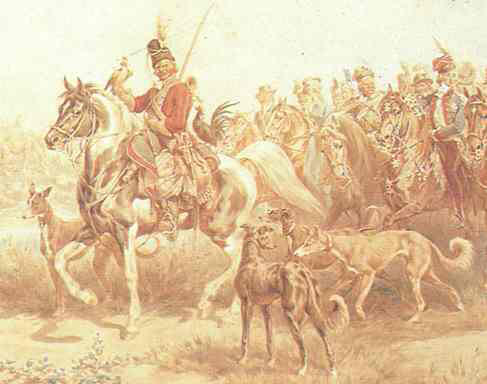 watercolour – 1876 : a catalogue for the different admitted ear carriages ?
watercolour1882 1882 1877 The Polish Greyhound carries the head carriage rather high but, at rest, slightly lower than the English Greyhound Energetic movement : good extension and ground covering stride at pace and trot … and gallop !
£oza Celerrimus (jagoda) – Femia Waijers Watercolour – 1857
Wrzesiek - 1866
.
Signed :
|